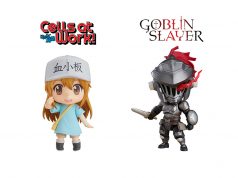The game changers

A lot of debate has been put into whether or not Cutie Honey (1973) should be in this list. After all, Cutie Honey was initially meant to be targeted towards girls where merchandise would include a “transforming doll”, but due to its usually male audience time-slot, it was made into a fanservice action anime to attract boys instead. The creator of Cutie Honey, Go Nagai himself is well known for his shonen oriented works, including being the creator of the Super Robot genre (Mazinger Z and Getter Robo) and the ecchi genre (Harenchi Gakuen) as well. So considering how the anime turned out, it isn’t surprising.
The anime follows main protagonist, Honey Kisaragi, who not only has the ability to transform into the heroine Cutie Honey, but into various other females as well. In factthe creator of Cutie Honey, was influenced by classical shows such as Bannai Tarao (where a detective could take on seven different faces) and Warrior of Love Rainbowman (one of the first few Superhero series in Japan), which explains Cutie Honey’s ability to transform as well as fight. Due to this heavy male influence, Cutie Honey was a pretty badass fighter which was rarely seen in most magical girl anime at the time. But with a male target audience, her transformations were flashy and had a lot of nudity. This is especially so in the 2004 OVA incarnation of the anime, Re: Cutie Honey.
While the nudity is questionable, Honey had a tendency of calling out her transformations and making a “love and justice” speech after it. Sounds familiar? That’s right. While not formally listed in the magical girl genre, Cutie Honey created a pattern for the Magical Warrior theme going on that many of us are familiar with. In fact Toei did eventually make a shojo version of Cutie Honey in 1997, called Cutie Honey Flash and that was also partially inspired by the popularity of one particular magical girl anime in the 90s. Yes, yes we’re getting there.
http://www.youtube.com/watch?v=ten4sIwapQ4
So while Cutie Honey may have made fighting magical girls appealing, it wasn’t targeted at girls and pandered to a man’s demand of fanservice. This is why when Sailor Moon (1992) stepped into the magical girl scene, it became a colossal hit and became the introduction of anime to many young girls growing up at the time (this writer included). Naoko Takeuchi, the creator of Sailor Moon, was adamant in making a magical warrior girls in outer space that catered to actual girls and their fantasies. This is why Sailor Moon’s accessories and staffs were made with girls in mind and the fanservice in Sailor Moon is limited, but it still succeeded in attracting a strong male fanbase anyways (it’s okay boys, we like to share).
Sailor Moon embodies a lot of what makes a magical girl so fascinating; from the transformations to the signature posing, the girls being soldiers (in spite of their short skirts!) and having them protect the world using magical attacks with magical wands and chants that young girls would use at the playgrounds too (come on, I can’t be the only one who did that!). And most importantly, having a group of different personality girls supporting each other through thick and thin.

Its popularity was so big, it influenced the creations of more magical girls that have a similar style. This can be seen in anime such as Pretty Cure (2004), Mermaid Melody Pichi Pichi Pitch (2003) and arguably Magic Knight Rayearth (1994), who in their own way made the magical girl genre endearing through strong female characters who may seem girly and emotional, but are driven by good morals and values. And until today, Sailor Moon related products are still in high demand, especially with the current anime remake, Sailor Moon Crystal.
http://www.youtube.com/watch?v=6WsoyWaGq6A





